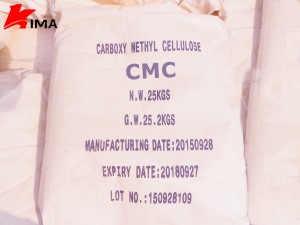What are the benefits of cellulose gum?
Cellulose gum, also known as carboxymethyl cellulose (CMC), is a common food additive that is used as a thickener, stabilizer, and emulsifier in a wide range of processed foods, cosmetics, and pharmaceutical products. While there have been concerns about the safety of cellulose gum in recent years, there are also several potential benefits associated with its use. In this article, we will explore some of the benefits of cellulose gum.
Improves Texture and Mouthfeel of Foods
One of the primary benefits of cellulose gum is its ability to improve the texture and mouthfeel of foods. Cellulose gum is a water-soluble polysaccharide that has the ability to absorb large amounts of water and form a gel-like substance. When added to food products, it can improve the viscosity and texture of the product, making it more appealing to consumers.
For example, cellulose gum is commonly used in salad dressings, sauces, and gravies to improve their texture and help them cling to food more effectively. It is also used in bakery products such as bread and cakes to improve their texture and moisture retention.
Stabilizes Emulsions
Another benefit of cellulose gum is its ability to stabilize emulsions. An emulsion is a mixture of two immiscible liquids, such as oil and water, that are mixed together with the help of an emulsifier. Cellulose gum can act as an emulsifier, helping to stabilize the mixture and prevent it from separating.
This property makes cellulose gum a valuable ingredient in many processed foods, such as salad dressings, mayonnaise, and ice cream, where it helps to stabilize the emulsion and prevent the product from breaking down over time.
Extends Shelf Life
Cellulose gum can also help to extend the shelf life of food products. When added to food products, it can form a protective barrier around the product, helping to prevent spoilage and microbial growth.
For example, cellulose gum is commonly used in processed meats such as sausages and deli meats to improve their texture and extend their shelf life. It is also used in baked goods such as bread and cakes to improve their texture and moisture retention, which can help to prevent them from becoming stale or moldy.
Enhances Nutritional Value
Cellulose gum can also enhance the nutritional value of certain foods. When added to foods such as dairy products, it can increase the calcium content of the product by binding to the calcium and preventing it from being excreted in the urine. This can be particularly beneficial for individuals who are at risk of calcium deficiency, such as those with osteoporosis or other bone disorders.
In addition, cellulose gum can also help to improve the nutritional value of foods by increasing their fiber content. Cellulose gum is a form of dietary fiber that can help to promote satiety, regulate blood sugar levels, and improve digestive health.
Acts as a Fat Replacer
Cellulose gum can also be used as a fat replacer in certain food products. When added to products such as low-fat salad dressings, it can help to mimic the mouthfeel and texture of higher-fat products, making them more appealing to consumers.
In addition, cellulose gum can help to reduce the calorie content of certain foods by replacing high-calorie fats with low-calorie fiber. This can be particularly beneficial for individuals who are trying to manage their weight or reduce their calorie intake.
Improves Drug Delivery
Cellulose gum is also commonly used in pharmaceutical products as a binder, disintegrant, and lubricant. It can help to improve the solubility and bioavailability of drugs.

Post time: Feb-27-2023
